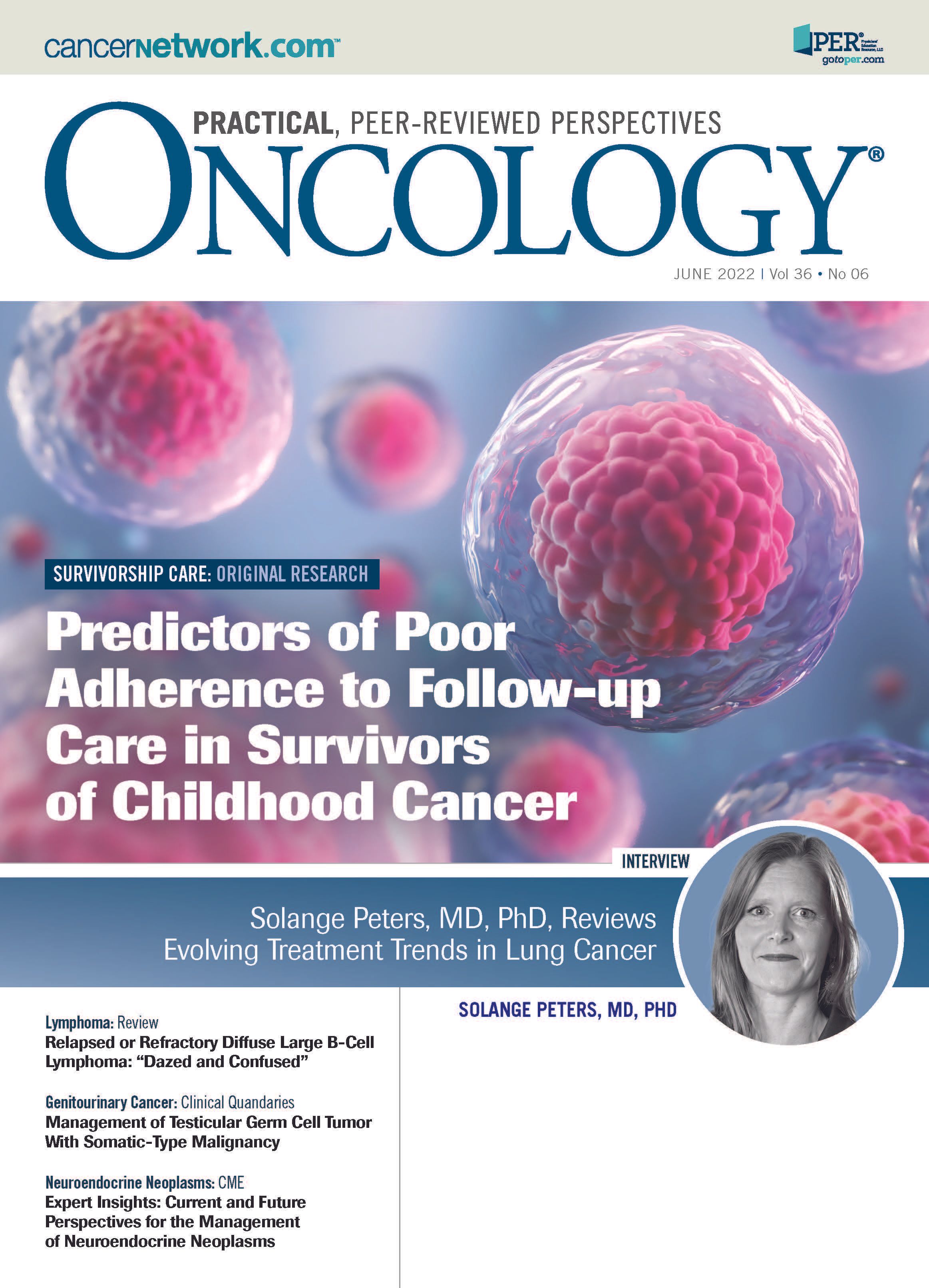Improving Cancer Survivorship Care Is a Team Sport
In this month's Letter to the Readers, ONCOLOGY co-editor-in-chief Julie M. Vose, MD, MDA, dives into the topic of survivorship care.
With continuing improvement in early detection, screening, and treatments for different types of malignancies, the number of cancer survivors is increasing steadily. This as well as the aging of the population is expected to increase the number of cancer cases and survivors needing care. The latest data from GLOBOCAN 2020 reported 19.3 million new cancer cases and 10 million deaths in 185 countries in 2020.1 There will be an estimated 26 million survivors in 2040, with the majority of them being older than 60 years.2 The seminal Institute of Medicine Report on Cancer Survivorship identified important components of cancer survivorship: 1) prevention of recurrent and new cancers and late effects from treatments; 2) surveillance for recurrence and new cancers, and for medical and psychosocial effects; 3) management of consequences of treatments, including symptom management and assistance with practical aspect; and 4) coordination between cancer and primary-care providers to ensure that all needs of the survivors of cancer are met.2 Using a holistic approach, the definition of cancer survivorship starts at the time of diagnosis and lasts throughout the life span.3
In addition to evaluation for relapse of the original malignancy, survivorship has many other aspects including observation for secondary malignancies, cardiovascular disease, hormonal and endocrine abnormalities, and psychosocial effects. A model that has become popular is focused on risk stratification of survivors. Survivors are assigned to low-risk, intermediate-risk, or high-risk categories with individualized plans.4 In this model, a patient with early-stage lung cancer or breast cancer would be low-risk whereas a patient who underwent an allogeneic stem cell transplant would be a high-risk survivor with differing needs. In addition, goals of cancer survivors may differ by age with the goal of prolonging life vs physical functioning and preservation of independence.5 The survivorship care plans that we are now urged to complete enhance communications between oncologists and primary care physicians for the long-term issues facing our patients.
Improvements for the future include clear identification of individual tasks assigned to the various health care providers for an individual survivor, increased communications between the oncology team and the primary care team, and a written plan of surveillance and health care maintenance testing shared with the primary care team. A shared electronic medical record between the teams can facilitate these goals as well as automated prompting of the providers for routine testing or health care maintenance needs. Oncologists’ goals are to return the patient to a lifestyle as close to normal as possible after their successful treatment for malignancy and to prevent long-term effects of their cancer treatment. The entire health care team shares these goals to provide cancer survivors with a smooth transition to a normal quality of life.
References
- Sung H, Ferlay J, Siegel RL, et al. Global cancer statistics 2020: GLOBOCAN estimates of incidence and mortality worldwide for 36 cancers in 185 countries. CA Cancer J Clin. 2021;71(3):209-249. doi:10.3322/caac.21660
- Bluethmann SM, Mariotto AB, Rowland JH. Anticipating the “silver tsunami”: prevalence trajectories and comorbidity burden among older cancer survivors in the United States. Cancer Epidemiol Biomarkers Prev. 2016;25(7):1029-1036. doi:10.1158/1055-9965.EPI-16-0133
- Institute of Medicine and National Research Council of the National Academies. From Cancer Patient to Cancer Survivor: Lost in Transition. National Academies Press; 2005.
- Nekhlyudov L, O’malley DM, Hudson SV. Integrating primary care providers in the care of cancers survivors: gaps in evidence and future opportunities. Lancet Oncol. 2017;18(1):e30-e38. doi:10.1016/S1470-2045(16)30570-8
- Shapiro CL. Cancer survivorship. N Engl J Med. 2018;379(25):2438-2450. doi:10.1056/NEJMra1712502

How Supportive Care Methods Can Improve Oncology Outcomes
Experts discussed supportive care and why it should be integrated into standard oncology care.